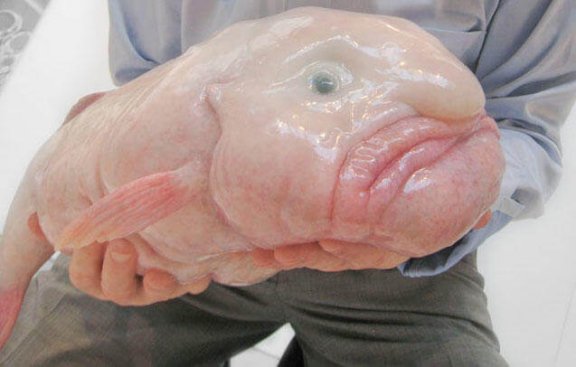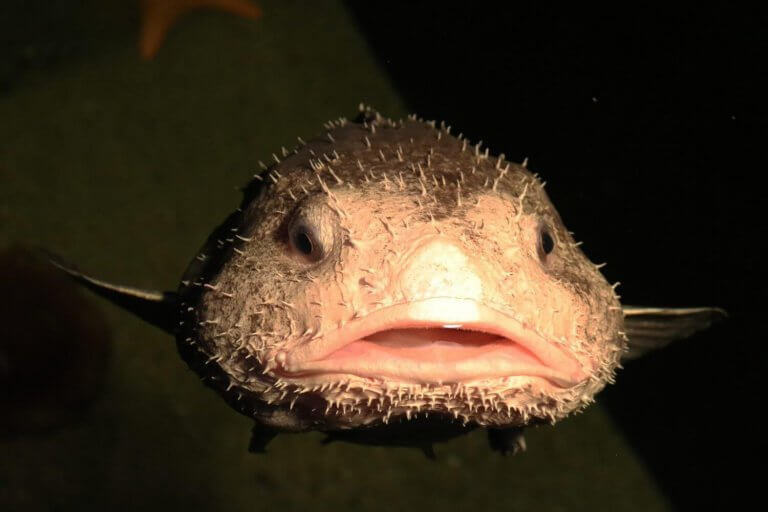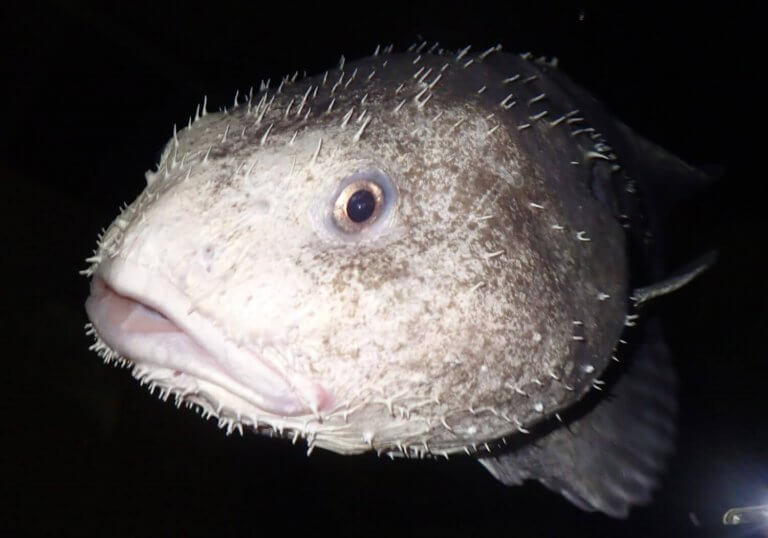The Blobfish: Habitat and Characteristics

The blobfish is a species of fish from the Psychrolutidae family. Its scientific name is Psychrolutes marcidus. This species is endemic to Australia, Tasmania, and New Zealand.
Its gelatinous and soft-boned texture makes it a rather strange and curious fish. However, it looks even stranger when it is taken out of the water. So, the blobfish has two appearances: a normal one when under water, and a gelatinous one when it is brought to the surface.
Anatomic characteristics of the blobfish
Scientists believe that females are larger than males. They are light cream to dark beige in color, depending on whether they are in the water or on the surface. They can measure between 30 and 40 centimeters long, and have no muscles; their bodies are gelatinous with soft bones.

Their bodies are not very dense, which helps them float above the bottom of the ocean. This is how they swim without wasting energy and stay alive in the deep sea.
They have a large head, which helps them float in the depths of the sea. They also have narrow fins to enable them to move slowly. In addition, they have large eyes of a gelatinous texture, which allow them to see in the dark. They don’t have teeth.
Distribution and habitat of the blobfish
The blobfish is a benthic species. It lives in temperate waters between 37 and 48 degrees Fahrenheit. They only inhabit deep ocean waters between Australia, New Zealand, and Tasmania.
The blobfish inhabits waters between 1300 and 5500 feet deep, where the pressure is 100 times higher than on the surface. This explains why the blobfish changes in appearance when it comes to the surface. It’s due to the lack of pressure in the water.
Behavior and reproduction of the blobfish
The blobfish lays a large number of eggs. Scientists believe they lay more than 80,000, but only between 1 and 2 percent reach adulthood. Both the male and the female blobfish guard them in the nest until they hatch. They behave in a passive, calm way. This helps them feed on prey that floats around them.

The blobfish’s lack of muscle isn’t an impediment to feeding. Since they aren’t predators, they don’t hunt or stalk their prey. They can ingest any edible object or animal that gets in their way. Therefore, their diet is based on smaller fish, mollusks, and crustaceans that inhabit deep water.
Despite not having teeth to crush food, the blobfish has a perfect digestive system. Their stomachs are full of gastric juices with corrosive capacities than can digest all kinds of food.
Conservation status
The blobfish is about to be placed on the list of endangered animals. This is mainly due to trawling techniques. They are usually caught accidentally in nets, which greatly affects their population and has made it decrease significantly. These nets also modify and destroy the habitat where these creatures live.
All cited sources were thoroughly reviewed by our team to ensure their quality, reliability, currency, and validity. The bibliography of this article was considered reliable and of academic or scientific accuracy.
May, J.L. y Maxwell , J.G.H. (1986). Trawl fish from temperate waters of Australia. Tasmania: CSIRO Division of Fisheries Research.